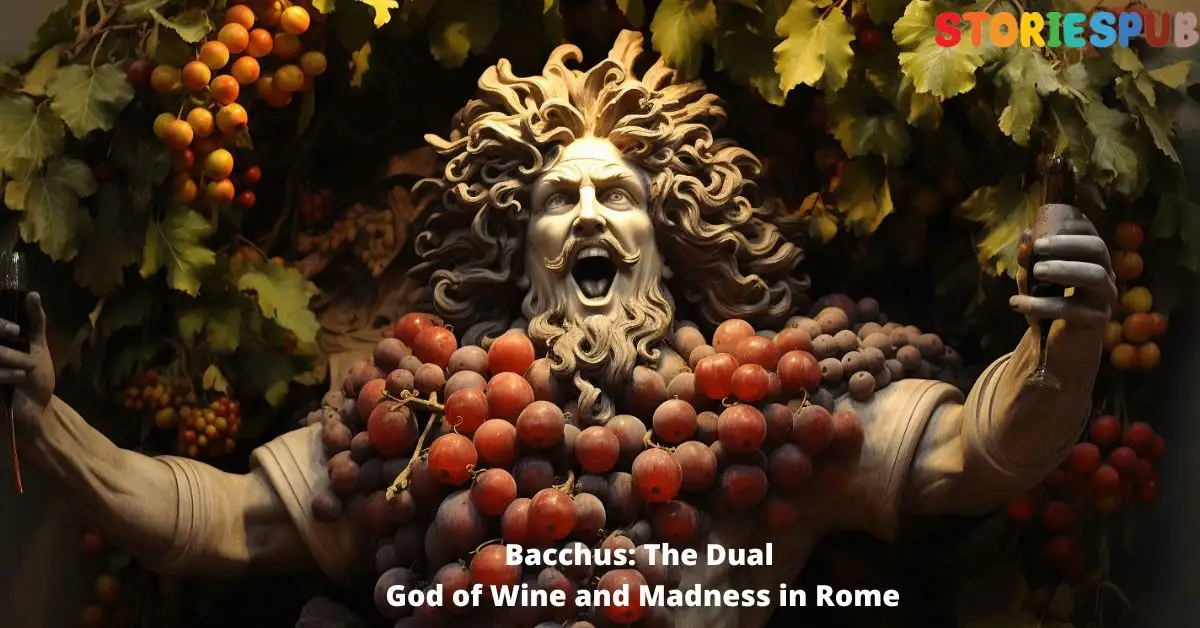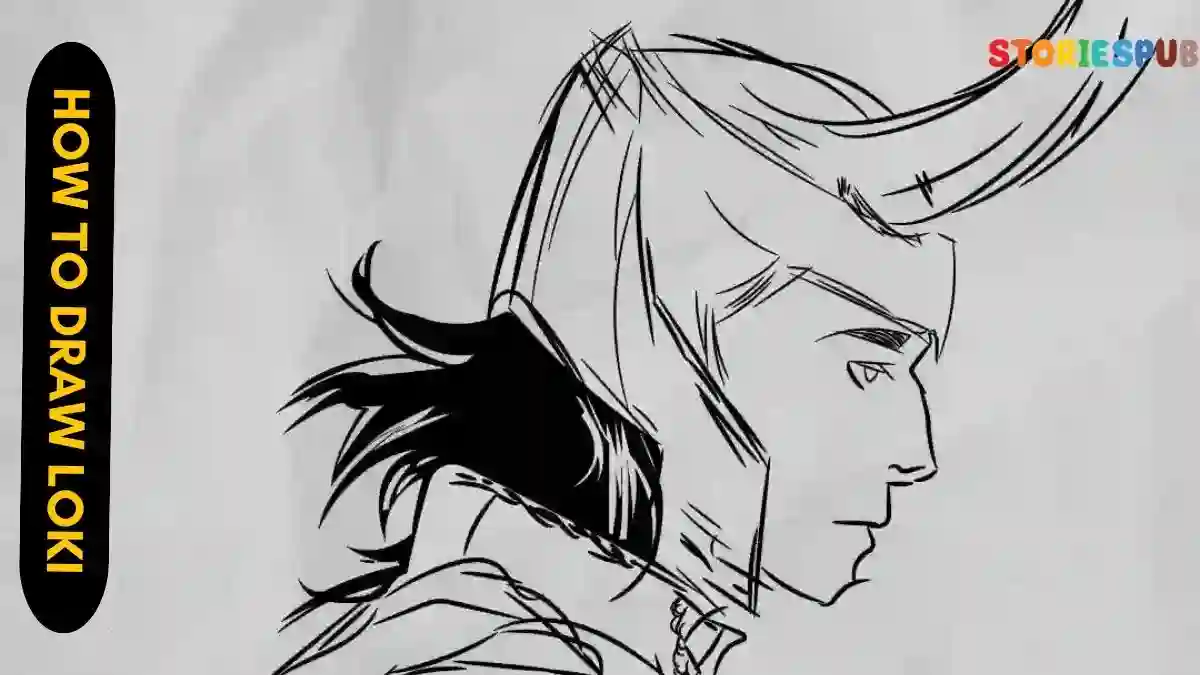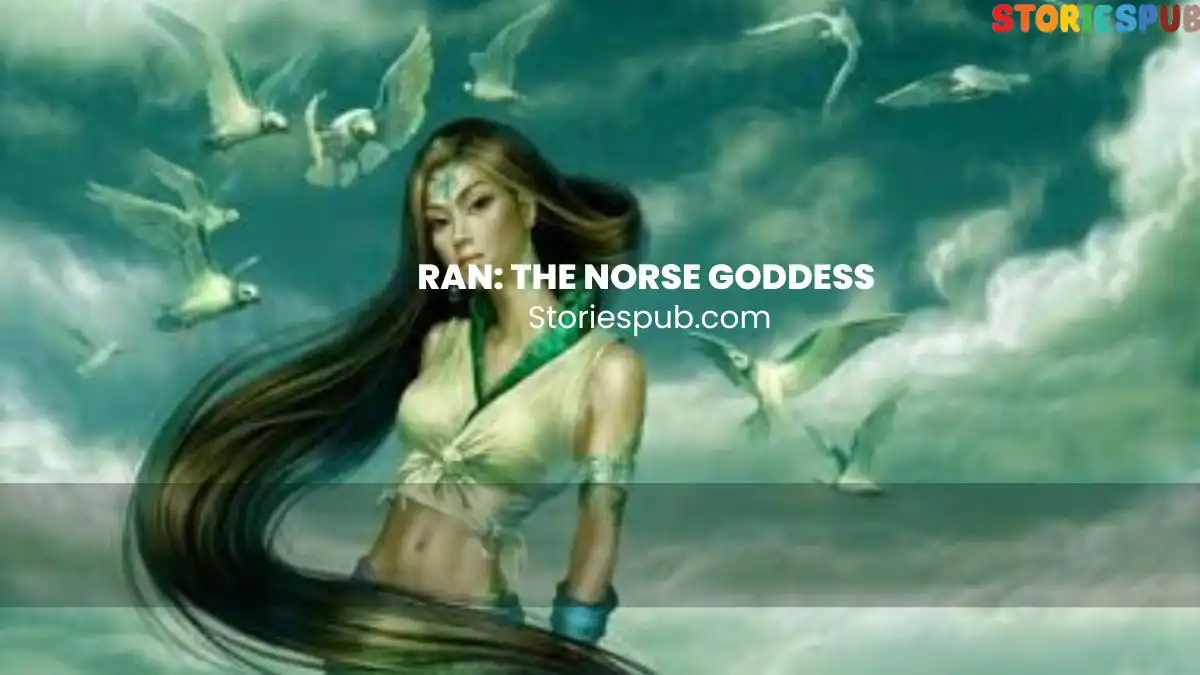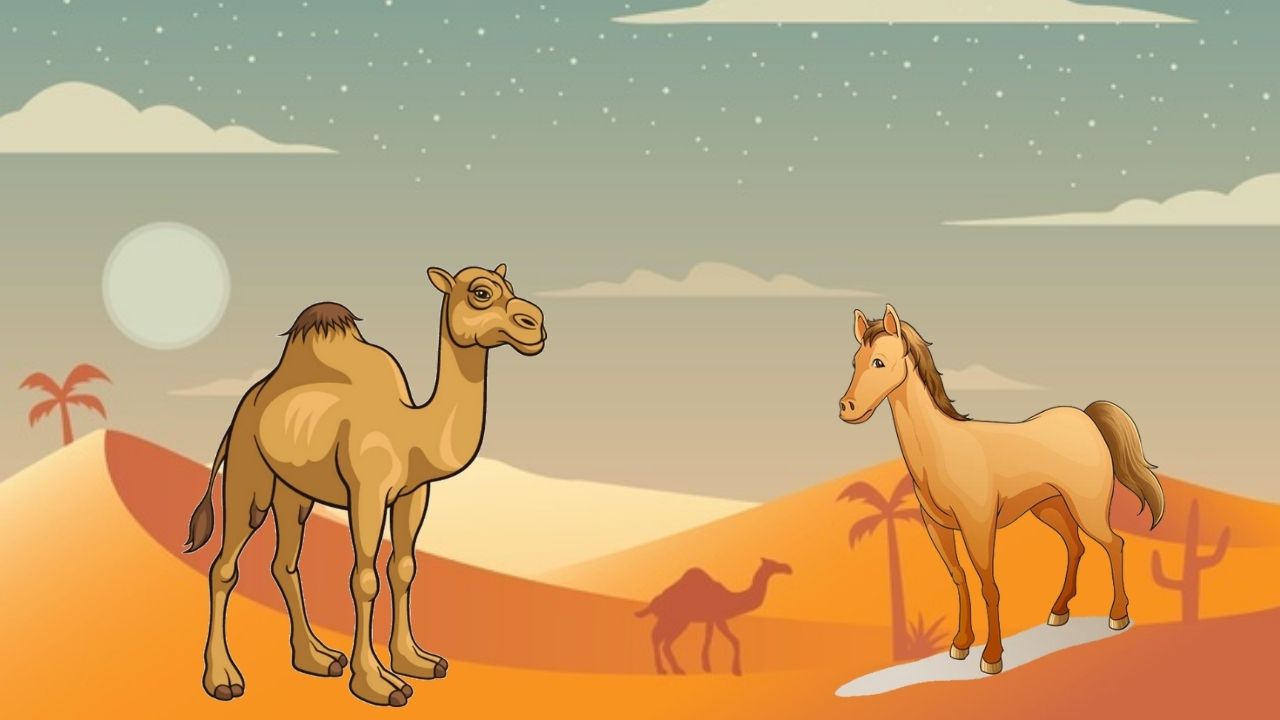Amun: The Creator God with a Ram’s Head
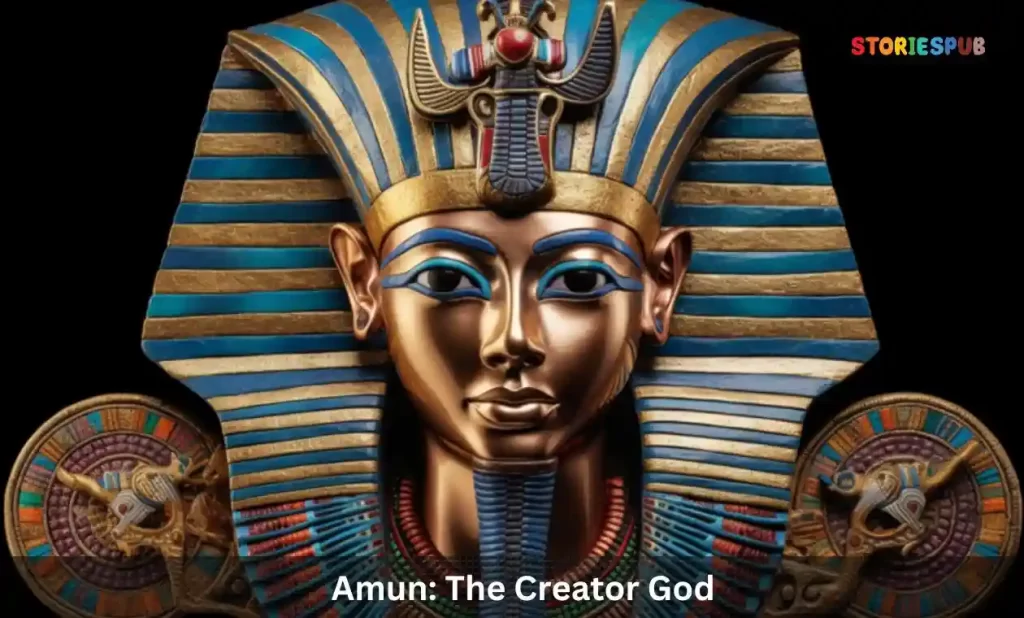
Introduction
The ancient Egyptian civilization is known for its fascinating mythology, which includes a vast pantheon of gods and goddesses. Among these deities, Amun was one of the most important and revered.
Amun was considered the god of creation, responsible for bringing the world into existence. He was also known as the king of gods, which elevated his status above all other deities in ancient Egypt.
Brief Overview of Ancient Egyptian Mythology
Ancient Egyptian mythology is a complex system of beliefs that emerged thousands of years ago in what is now modern-day Egypt. Egyptians believed that their gods and goddesses were responsible for creating and maintaining order in the universe. They also believed that their pharaohs were divine beings who acted as intermediaries between humans and gods.
The ancient Egyptians worshiped many different deities, each with its own unique attributes and responsibilities. Some gods were associated with natural phenomena like the sun or the Nile River, while others represented abstract concepts such as wisdom or fertility.
Introduction to Amun, the God of Creation
Amun was one of the most important gods in ancient Egypt’s pantheon; he was considered to be a creator god who brought order out of chaos at the beginning of time. His name means “hidden” or “invisible,” which reflects his mysterious nature.
Over time, he became increasingly linked with other major deities such as Ra and Osiris. Despite being one of Egypt’s most prominent gods during much of its history, little is known about how he came into being or how he was worshipped prior to the New Kingdom period (around 1550-1077 BCE).
Description Of Amun’s Physical Appearance As A Man With A Ram’s Head
In art and statues from Ancient Egypt, Amun is often depicted as a man with a ram’s head, wearing a tall plumed crown. This physical appearance symbolized his association with fertility and virility, as rams were seen as symbols of strength and power. Amun’s human body was often shown wearing royal regalia, such as the double crown of Upper and Lower Egypt.
The god’s beard was also an important aspect of his appearance since it represented his role as a creator deity. In some depictions, Amun was also shown holding the ankh symbol, which represented life and regeneration.
This reflected his association with fertility and creation. Overall, the depiction of Amun in ancient Egyptian art reflected his importance in their society and religion.
Conclusion: Understanding Ancient Mythology
Understanding ancient mythology helps us to gain insight into cultures of the past. In the case of ancient Egypt mythology, we learn about their beliefs about gods and goddesses that were integral to their daily lives. The worship of these deities helped provide a sense of order in an otherwise unpredictable world.
Amun was one such deity who held immense power over ancient Egyptians during much of their history. Through studying Amun’s physical appearance and role in creation stories helps us to better understand how people from this era viewed themselves in relation to the cosmos around them.
The Birth of Amun
Creation story of Amun
According to the ancient Egyptian creation myth, Amun emerged from the swirling chaos at the beginning of time. He was said to have created himself through his own power and will, and then went on to create all other living beings.
This unique birth story sets Amun apart from other gods in Egyptian mythology, as he was not born out of a union between two deities or from a physical process like many other gods. Amun quickly rose to prominence in the pantheon of ancient Egyptian gods due to his role as creator deity.
He was often depicted holding a scepter and ankh, symbols of power and life respectively. As such, he became associated with pharaonic authority and was seen as an important ally by rulers throughout Egypt’s history.
Importance of Amun in ancient Egyptian culture and religion
Amun’s importance grew over time as he became more closely associated with key concepts like kingship, creation, fertility, and renewal. The god was also linked with the powerful sun god Ra, leading to the belief that he possessed solar powers as well.
Throughout much of Egyptian history (particularly during the New Kingdom period), Amun was regarded as the king of gods who surpassed all others in terms of power and influence. His worship spanned across most regions in Egypt, with major temples dedicated to him located in cities like Thebes (modern-day Luxor) and Karnak.
The rise of Amun’s cult had a significant impact on ancient Egyptian religion as a whole. Many temples across Egypt were built specifically for his worship, with elaborate ceremonies held regularly in his honor.
The cult even spread beyond Egypt’s borders at times, with evidence suggesting that some Nubian rulers adopted aspects of his worship into their own religious practices. The birth story and importance of Amun in ancient Egyptian culture and religion are crucial to understanding the role that he played in shaping the civilization’s beliefs and practices.
Amun’s unique creation myth set him apart from other gods, while his association with pharaonic authority made him a powerful ally for rulers seeking legitimacy. The god’s cult also had a wide-reaching impact on Egyptian religion, influencing everything from temple architecture to religious ceremonies held in his honor.
The Power and Influence of Amun
Role as the King of Gods and Creator Deity
Amun was considered the king of gods in ancient Egypt. His power and influence grew over time, leading to him becoming one of the most important deities in the Egyptian pantheon. He was often depicted as a man with a ram’s head, symbolizing his association with fertility, virility, and strength.
As a creator deity, Amun was believed to have created everything in existence through his thoughts and speech. He also played an important role in the creation myth of ancient Egypt.
According to this myth, Amun emerged from the chaotic waters of Nun at the beginning of time and created himself. He then went on to create all other gods and goddesses, as well as humans.
Significance in the New Kingdom period
The New Kingdom period marked an era of great significance for Amun. During this time, he became closely associated with Thebes (modern-day Luxor), which became his primary cult center. The city grew into a powerful religious hub that attracted pilgrims from all over Egypt.
Amun’s influence extended beyond Thebes into politics and warfare. Many pharaohs saw themselves as agents of Amun’s will and sought his guidance before embarking on military campaigns or major construction projects like temple building.
Relationship with Other Gods, Including Ra and Osiris
Amun had complex relationships with other gods like Ra and Osiris that evolved over time based on political power dynamics within the pantheon. In some myths, he merged with Ra to become Amun-Ra or Atum-Ra, a powerful sun god who ruled over all creation.
In other stories, he was connected to Osiris through his role as “the hidden one”, which referred to his ability to remain unseen while still exerting his influence over the world. This connection allowed him to become a part of the story of Osiris’ resurrection, which was central to ancient Egyptian beliefs about death and the afterlife.
Overall, Amun’s power and influence were felt throughout ancient Egypt for thousands of years, making him one of the most important gods in their pantheon. His association with creation, fertility, strength, and virility made him an enduring symbol of life and vitality that continues to inspire people today.
Conclusion
The power and influence of Amun as a king of gods and creator deity was immense in ancient Egypt. His significance grew over time as he became more closely associated with Thebes during the New Kingdom period. His relationships with other gods like Ra and Osiris were complex and evolved over time based on political power dynamics within the pantheon.
Studying myths like those surrounding Amun can provide insight into cultures past and help us understand how people viewed themselves, their place in the world, and what they valued most. Despite being part of an ancient civilization that has long since passed from existence, Amun’s legacy lives on today through his enduring symbolism as a deity associated with creation, growth, fertility, strength, virility- all essential parts of our human experience that continue to resonate with us today.
Worship and Rituals
Temples dedicated to Amun across Egypt
Temples were an integral part of ancient Egyptian religious practices, and Amun was one of the most revered gods. Therefore, it is not surprising that many temples in Egypt were dedicated to him. The most famous of these temples is the Karnak Temple complex in Luxor.
The temple was built over several centuries, with each Pharaoh adding his own contribution to it. The temple complex covers an area of more than 200 acres and was the largest religious building in the world during its time.
Other notable temples dedicated to Amun include the Temple of Luxor, which dates back to the reign of Amenhotep III. This temple was also added to over time by various pharaohs and has a magnificent avenue lined with sphinxes leading up to its entrance.
The Temple of Medinet Habu is another impressive example of a temple dedicated to Amun. This temple is located on the west bank of the Nile River and was built during the reigns of Ramesses III and Ramesses IV.
Offerings, prayers, and ceremonies associated with worshiping Amun
Offerings were made at Amun’s temples as a way for people to show their devotion and ask for his blessings. These offerings included food, drink, incense, flowers, and precious metals such as gold. Prayers were also an essential part of worshiping Amun.
People would pray for good health, prosperity or success in their endeavors or even protection from evil spirits. Priests would perform ceremonies on behalf of worshippers where they would recite prayers while offering offerings at the altar.
One particular ceremony that stands out is called “The Beautiful Feast Of The Valley”. This celebration took place annually in Thebes (modern-day Luxor).
It was a grand festival where statues of the gods, including Amun, would be taken in procession across the Nile to visit the tombs of their ancestors. The festival was a celebration of life and death, and it symbolized the cycle of rebirth that was central to ancient Egyptian beliefs.
Another unique ceremony was the “Opet Festival” which took place at Karnak Temple. This festival celebrated the union of Amun and his consort Mut.
The priests would carry statues of both gods from Karnak Temple to Luxor Temple and back again over a period of several days. It was a grand celebration filled with music, dancing, and offerings.
Worshiping Amun involved offering sacrifices at his Temples spread across Egypt and reciting prayers on special occasions for blessings from him. These ceremonies gave people an opportunity to connect with their creator deity, Amun which provided them with reassurance regarding life’s biggest questions.
Decline and Resurgence
The decline of the worship of Amun during the reigns of Akhenaten and Tutankhamen
During the reigns of Pharaoh Akhenaten and his successor Tutankhamen, there was a significant decline in the worship of Amun. Akhenaten rejected traditional Egyptian polytheism and established a new monotheistic religion centered around Aten, the sun disk. This caused a massive shift in religious practices, and temples dedicated to Amun were abandoned or repurposed for other gods.
Tutankhamen, who succeeded Akhenaten, attempted to re-establish traditional polytheistic worship but did not fully support the cult of Amun. This led to a period of decline in the influence and popularity of Amun as a deity.
The rediscovery and revival of interest in Ancient Egypt during the 19th century led to renewed interest in Amun
The rediscovery and revival of interest in ancient Egypt during the 19th century had a profound impact on modern understanding and appreciation for Egyptian mythology, including the god Amun. Scholars began studying hieroglyphics, excavating ancient sites, and exploring Egyptian history. This renewed interest sparked curiosity about ancient Egyptian culture among European intellectuals who sought inspiration from exotic traditions.
They became fascinated by Ancient Egypt’s mystical beliefs surrounding life after death, pyramids, sphinxes, hieroglyphics among others. Archaeologists like Auguste Mariette discovered incredible treasures at Karnak Temple Complex found that gave insight into how much Egyptians revered their gods.
The discovery included vast temples dedicated to Amun which included statues made out gold. In addition to Mariette’s discovery there was an exhibition in Paris where amulets were displayed featuring images associated with
Amun such as scarab beetles which symbolized rebirth. The decline of the worship of Amun during the reigns of Akhenaten and Tutankhamen did not diminish his importance in ancient Egyptian religion.
The rediscovery and revival of interest in Ancient Egypt in modern times have brought to light new insights into this fascinating deity. Understanding Amun’s role as the king of gods and creator deity, his power and influence, as well as the rituals associated with his worship, can provide valuable insight into ancient Egyptian culture and mythology.
Conclusion
Understanding Ancient Mythology
The study of ancient mythology is essential to our understanding of human history and culture. By examining myths and legends, we gain insight into the beliefs, values, and experiences of ancient civilizations. Myths are not just stories; they are a reflection of the people who told them.
They reveal how people understood their place in the world, their relationship with nature, and their hopes for the future. In particular, studying Egyptian mythology allows us to better understand one of the most influential cultures in human history.
The Egyptians created some of the most enduring art, architecture, and literature in world history. Their mythology played a central role in their society, shaping everything from religious practices to political structures.
Insight into Cultures Past
The study of ancient myths can provide valuable insights into cultures that no longer exist. By examining how myths were used to explain natural phenomena or teach moral lessons, we can learn about the values and beliefs that were important to these societies. For example, in Egyptian mythology Amun was seen as a creator god who brought order out of chaos.
This reflects a deep-seated belief among Egyptians that life was inherently chaotic and unpredictable; they saw themselves as living in an unstable universe that constantly threatened to fall apart. By worshiping Amun and other creator gods like him, they hoped to bring stability to their lives.
Similarly, many myths from around the world feature stories about heroes who go on quests or undertake difficult challenges. These stories reflect cultural ideals such as bravery, perseverance, and selflessness – qualities that were highly valued by societies at the time.
An Optimistic Spin
Despite the fact that these ancient civilizations no longer exist in their original form, studying them can still offer hope for our future. By learning about how people coped with challenges in the past, we can gain insight into how we can cope with challenges in the present and the future. Moreover, studying mythology can help us appreciate the beauty and complexity of human culture.
Whether it is through examining the intricate stories of Greek gods and goddesses, diving deep into the rich symbolism of Native American myths, or exploring the intricacies of Egyptian religion, these stories remind us that humanity is capable of producing incredible works of art, literature, and philosophy. Understanding ancient mythology is crucial to understanding human history and culture.
Through examining these myths and legends, we gain valuable insight into how people lived their lives in the past. These stories also offer hope for our future by reminding us of humanity’s ability to persevere through adversity and create beauty even in difficult times.
Hey kids, how much did you like The Amun: The Creator God with a Ram’s Head ? Please share your view in the comment box. Also, please share this story with your friends on social media so they can also enjoy it, and for more such Egyptian Mythology, please bookmark storiespub.com.
Related Post :
Amun FAQ
Who is Amun in Egyptian mythology?
Amun is a major ancient Egyptian god associated with creation and is often referred to as the "King of the Gods." He played a central role in the Egyptian pantheon.
Why is Amun depicted with a ram's head?
Amun is often depicted with a ram's head to symbolize his creative power, strength, and fertility. The ram was considered a sacred animal in ancient Egypt, representing these attributes.
How did Amun's role in the Egyptian pantheon evolve over time?
Amun's significance grew over time, eventually merging with the sun god Ra to form Amun-Ra, a supreme deity who combined the aspects of creation and solar power
What is the significance of the Temple of Karnak?
The Temple of Karnak, located in modern-day Luxor, is dedicated to the worship of Amun-Ra. It is one of the largest religious complexes in the world and was a center of worship for Amun.
Were there any major festivals dedicated to Amun?
Yes, the Opet Festival was an annual event celebrating Amun's journey from Karnak to Luxor Temple, symbolizing the rejuvenation of his divine powers and the pharaoh's connection to him.
How was Amun worshipped by ancient Egyptians?
Amun was worshipped through prayers, offerings, and rituals performed by priests in temples dedicated to him, as well as by the general public through personal devotion and statues.
What are Amun's key attributes and symbols?
Amun is often associated with creation, fertility, and power. His key symbols include the ram's head, the double-plumed crown, and the ankh, representing life.
Did Amun have a consort or family?
Amun's consort was the goddess Mut, and their son was the moon god Khonsu. Together, they formed the Theban Triad, a group of deities worshipped in the ancient city of Thebes.
How did Amun's worship decline in ancient Egypt?
The worship of Amun began to decline during the reign of Pharaoh Akhenaten, who introduced the monotheistic worship of Aten. Amun's popularity never fully recovered afterward.
What modern cultural references exist for Amun?
Amun's legacy can be found in modern literature, film, and video games inspired by ancient Egyptian mythology and history, often featuring him as a powerful or enigmatic figure.



